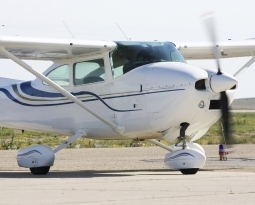Californians turn to a startup to check their air quality
During the California wildfires, air pollution was a major concern, and a crowd-sourced Utah startup became an unlikely hero. PurpleAir monitors air quality in real-time, thanks to a network of sensors across North America. The sensors sell for $179 to $259 and can be easily set up at a person’s home. They then link to Wi-Fi, and upload data to the cloud. This data is then displayed on the PurpleAir’s map; it’s popularity increased by 100-fold after California’s wildfire season began this year.
The United States Environmental Protection Agency (EPA) uses high-tech monitors to measure air quality. However, these monitors are expensive and sparsely spread around the country. They give residents an averaged idea of air pollution, but aren’t specific. And, in the case of the 2019 wildfires, some of the government monitors gave incorrect readings. In comparison, PurpleAir’s network includes thousands of sensors – 3000 in California alone. While they may not be as high-tech, their coverage gives a good indication of pollution in specific areas, and can help people instantly.
How do they work?
PurpleAir’s sensors use a fan to push air past a laser beam. Any particles in the air will reflect light onto a detection plate. This plate measures the reflection like a pulse; large particles make a long pulse, small particles make a quick pulse. Doing this, the sensor can count particles in sizes of 0.3 to 10μm (micrometers). Anything bigger than 10μm will get breathed in and trapped in the throat, while smaller particles will get inhaled and affect the lungs.
After monitoring the particle sizes, PurpleAir’s algorithm calculates the concentration of particle matter in the air. It measures PM10, PM2.5 and PM1.0. In context, PM2.5 is described as fine particles, and about 40 fine particles make up the width of human hair. These fine particles are actually more harmful than the larger, because they’re more likely to go deeper into the lungs.
The big-time hero had to start somewhere
The company started in 2015, when the founder, Adrian Dybwad, set out to measure dust from a gravel pit near his home. “I said to myself, it’s 2015, surely there must be a sensor that can tell me how much dust is in there,” Dybwad said. With a lack of affordable, accurate sensors and his background in computer networking and electronics, Dybwad started making his own. His community donated a few thousand dollars – enough for the area to have 80 sensors. “We didn’t set out to do better than the government’s own monitoring, we set out to satisfy our own curiosity,” he said.
But, more and more people are turning to PurpleAir’s monitors. In November 2018, PurpleAir moved out of Dybwad’s house and into a full-time workshop, where production continues to increase. In July 2019, a PurpleAir sensor was installed at its highest altitude: on the side of a small astronomy dome in California’s White Mountains, at approximately 13,000 feet.
Are you developing technology to improve shared data or help people know about their environment? Did you know your work could be eligible for the R&D Tax Credit and you can receive up to 14% back on your expenses? To find out more, please contact a Swanson Reed R&D Specialist today or check out our free online eligibility test.
Who We Are:
Swanson Reed is one of the U.S.’s largest Specialist R&D tax advisory firms, offering tax credibility assessments, claim preparation, and advisory services. We manage all facets of the R&D tax credit program, from claim preparation & audit compliance to claim disputes.
Swanson Reed regularly hosts free webinars and provides free IRS CE and CPE credits for CPA’s. For more information please visit us at www.swansonreed.org/webinars or contact your usual Swanson Reed representative.






